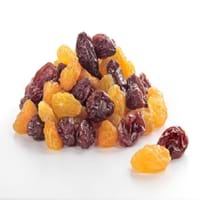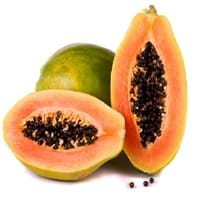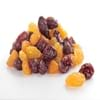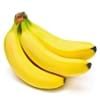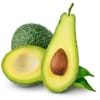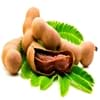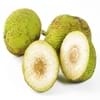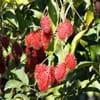Health Benefits
Acidity treatment, Cancer prevention, Good for diabetics, Prevents constipation, Prevents Anaemia
Arthritis prevention, Asthma treatment, Cancer prevention, Heart care, Prevents macular degeneration, Prevents rheumatoid
General Benefits
Boosts immune system, Cures fever, Eye care, Fights against infections, Strengthens bones
Anti-inflammatory properties, Boosts immune system, Digestive aid, Healing of wounds, Maintains healthy cholesterol level, Strengthens bones
Skin Benefits
Anti-aging benefits, Reduces wrinkles, Skin rejuvenation
Anti-aging benefits, Hydrates skin, Skin revitalization, Treatment of acne, Treatment of dark spots
Hair Benefits
Protects hair
Good conditioner, Promotes longer and healthier hair, Softening mask, Treatment of dandruff
Allergy Symptoms
Anaphylaxis, Asthma, Breathing difficulty, Coughing, Drop in blood pressure, Hives, Skin rash, Stuffy nose, Swelling of mouth, tongue or lips, Wheezing
Abdominal pains, Carotenemia on excessive consumtion, Latex Allergy
Side Effects
Allergic reaction
Allergic reaction, Skin problems, Possibly unsafe during pregnancy
Lactating Women
Not Available
Yes
Best Time to Eat
Any time except an hour after meal
As a snack in the late afternoon, Don't consume at night and before bed, Don't eat after meal
Vitamin B5 (Pantothenic Acid)
Vitamin C (Ascorbic Acid)
Vitamin K (Phyllochinone)
Calories in Fresh Fruit with Peel
Not Available
Calories in Fresh Fruit without Peel
Not Available
Calories in Frozen Form
Not Available
Calories in Dried Form
Not Available
Calories in Canned Form
Not Available
Type
Berry
Melon, Tree fruit
Season
All seasons
All seasons
Varieties
Dark raisins, White or golden raisins, Sultanas and Currants
Coorg Honey Dew, Pusa Dwarf, Pusa Giant, Pusa Majesty, Pusa Delicious, Pusa Dwarf, Solo, Ranchi, Taiwan-785 and Taiwan-786
Seedless Variety
Not Available
No
Color
Black, Blue, Green, Purple, Yellow
Orange, Yellow
Inside Color
Brown
Orange
Taste
Sweet
Luscious, Sweet
Origin
Central Europe, Western Asia
Mexico, Central America
Grows on
Not Available
Trees
Soil Type
Clay loam, Sandy loam
Rocky, Sandy, Well-drained
Climatic Conditions
Warm
Warm, Without frosts
Facts about
- 30th April is known as National Raisin Day.
- Fresno, California is known as raisin capital of the world.
- Half of world's raisin supply is produced in California.
- Papaya seeds show contraceptive effects in male monkeys.
- Their seeds are used as a replacement for black pepper in some nations due to peppery taste.
- Papaya is known by funny names like paw paw or papaw and the mamao.
Top Producer
United States of America
India
Other Countries
Afghanistan, Argentina, Australia, Chile, China, Iran, South Africa, Turkey, Uzbekistan
Brazil, Indonesia, Mexico, Nigeria
Top Importer
Europe
United States of America
Top Exporter
Turkey
Mexico
Botanical Name
Vitis Vinifera
Carica papaya
Synonym
Not Available
Not Available
Subkingdom
Tracheobionta
Tracheobionta
Division
Magnoliophyta
Magnoliophyta
Class
Magnoliopsida
Magnoliopsida
Subclass
Not Available
Dillenhidae
Order
Vitales
Brassicales
Family
Vitaceae
Caricaceae
Species
Vitis vinifera
C. papaya
Generic Group
Grape
Papaya
Difference Between Raisin and Papaya
We might think that Raisin and Papaya are similar with respect to nutritional value and health benefits. But the nutrient content of both fruits is different. Raisin and Papaya Facts such as their taste, shape, color, and size are also distinct. The difference between Raisin and Papaya is explained here.
The amount of calories in 100 gm of fresh Raisin and Papaya with peel is 299.00 kcal and Not Available and the amount of calories without peel is Not Available and 43.00 kcal respectively. Thus, Raisin and Papaya belong to and category.These fruits might or might not differ with respect to their scientific classification. The order of Raisin and Papaya is Vitales and Brassicales respectively. Raisin belongs to Vitaceae family and Papaya belongs to Caricaceae family. Raisin belongs to Vitis genus of Vitis vinifera species and Papaya belongs to Carica genus of C. papaya species. Beings plants, both fruits belong to Plantae Kingdom.
